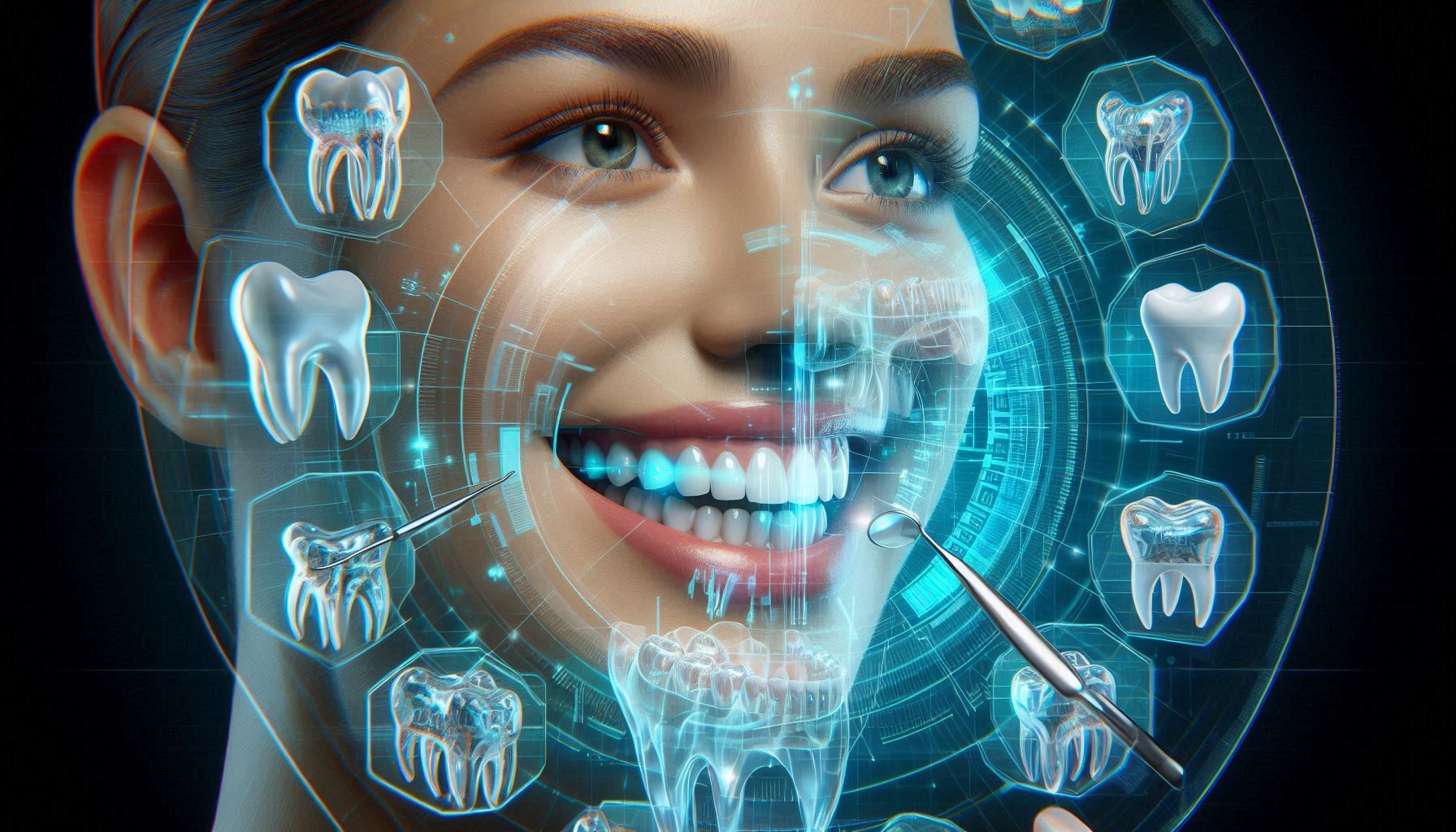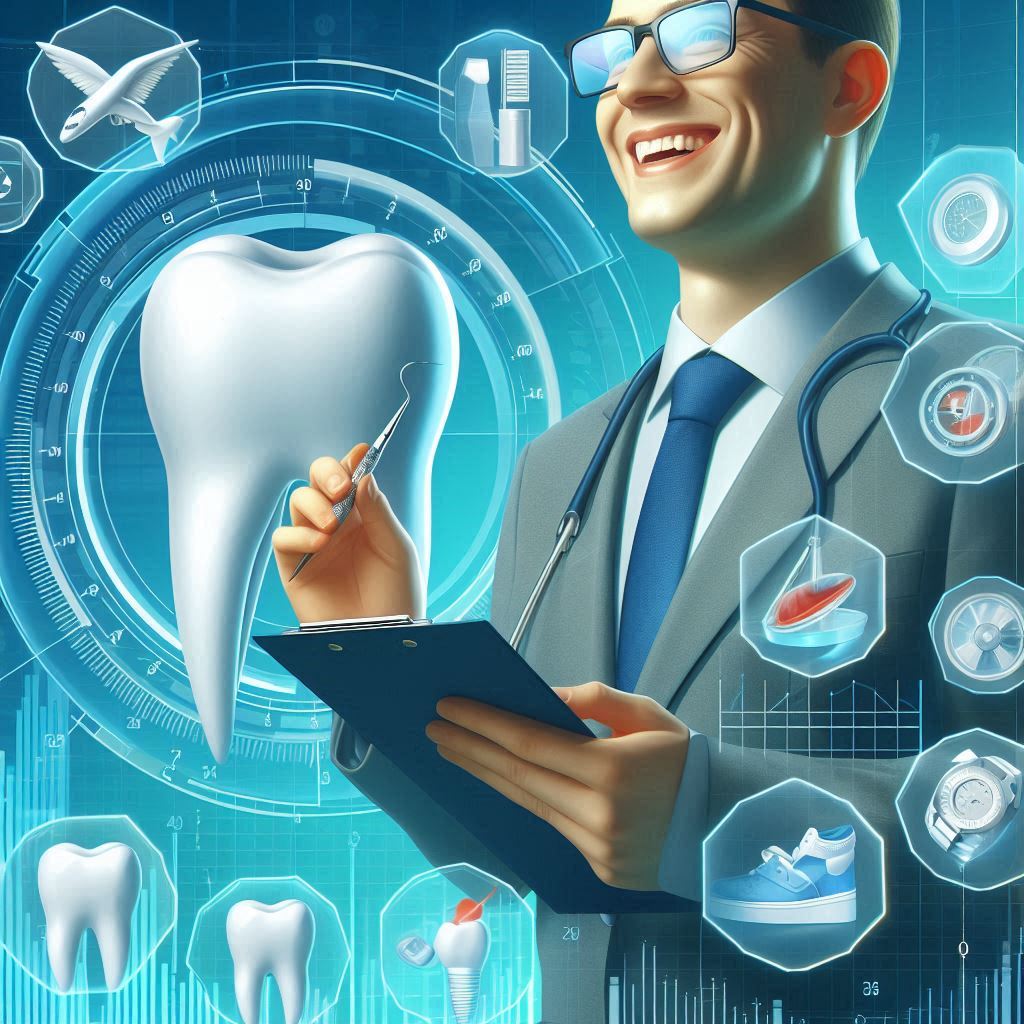The field of orthodontics has undergone remarkable transformations in recent years, with technology serving as a primary catalyst for innovation. With the integration of digital tools, 3D imaging, and computer-assisted treatment planning, orthodontic care has evolved in a way that was once thought impossible. From improving diagnosis to enhancing patient experience, these advances have set the stage for a new era in orthodontics—one marked by precision, efficiency, and personalization.
Historically, orthodontics relied on traditional methods of diagnosis, such as two-dimensional X-rays, physical impressions, and manual charting of treatment plans. While effective, these techniques were not without limitations, often involving discomfort, delays in treatment, and a lack of precision in diagnosing and planning orthodontic interventions. Fast forward to today, and the integration of 3D imaging, digital planning tools, and the use of AI has revolutionized every aspect of the orthodontic process, ensuring that treatments are faster, more accurate, and better tailored to each patient’s needs.
In this article, we will explore the role of technology in modern orthodontics, with a particular focus on the transformative power of 3D imaging and digital tools. From enhanced diagnostic accuracy to more comfortable and personalized treatment options, we will examine how technology is shaping the future of orthodontic care.
1. The Evolution of Orthodontics: A Brief History
To fully appreciate the role of modern technology in orthodontics, it’s important to understand where the field has come from. The roots of orthodontics can be traced back to the ancient Egyptians, who used rudimentary methods to align teeth. Over the centuries, orthodontic techniques slowly evolved, with early pioneers like Pierre Fauchard in the 18th century developing early concepts of braces made from wire and bands.
However, it wasn’t until the early 20th century that orthodontics began to emerge as a specialized field of dentistry. The development of new materials like stainless steel in the 1920s revolutionized the construction of braces, and the concept of “orthodontic appliances” became widely accepted. X-rays also became a valuable tool for orthodontists to assess bone and tooth structures, providing a clearer understanding of alignment issues.
While these early advances were important, they were not without their flaws. X-rays, for instance, were limited to two-dimensional images, often leading to incomplete or inaccurate information about a patient’s anatomy. Similarly, the creation of physical molds required an uncomfortable, often painful process of taking impressions, which left much to be desired in terms of precision.
2. The Rise of Digital Orthodontics
The modern era of orthodontics has been defined by the emergence of digital tools, beginning with intraoral scanning technology. Intraoral scanners, which use laser or optical sensors to create highly detailed, three-dimensional images of a patient’s teeth and gums, quickly gained popularity due to their ability to produce accurate digital impressions in a non-invasive and pain-free manner.
Before the advent of intraoral scanning, orthodontists used traditional methods of taking physical impressions, where patients had to bite into trays filled with dental putty, which could be uncomfortable and often inaccurate. This process was time-consuming and often required multiple visits to get the right mold. In contrast, intraoral scanners provide real-time, high-definition digital impressions, which can be stored, analyzed, and shared in seconds. This innovation marked the beginning of the digital transformation in orthodontics.
The Impact of Digital Impressions
The digital impressions generated by intraoral scanners have brought a number of benefits to orthodontics. First and foremost, the level of precision offered by digital impressions is far superior to traditional molds. Because digital scanners capture thousands of data points to create a precise map of the mouth, the resulting models are incredibly accurate, reducing the risk of errors in orthodontic treatment.
Additionally, digital impressions eliminate many of the challenges associated with physical molds. There’s no discomfort from dental putty, and no need for multiple attempts to capture an accurate mold. The convenience and speed of the process enhance the overall patient experience, making orthodontic procedures less intimidating for both children and adults.
Another advantage is the ability to easily store, share, and track digital impressions. Orthodontists can access a patient’s digital records at any time and make real-time updates, facilitating collaboration with other dental professionals and enabling quicker treatment planning.
3. 3D Imaging: Transforming Diagnosis and Treatment Planning
3D imaging has become an indispensable tool in modern orthodontics. With 3D imaging systems such as cone beam computed tomography (CBCT), orthodontists can capture detailed, three-dimensional images of the patient’s teeth, bones, and soft tissues. This advanced imaging allows for a more comprehensive understanding of a patient’s oral and facial anatomy, helping orthodontists make more accurate diagnoses and create tailored treatment plans.
Cone Beam CT Scanning (CBCT)
Cone Beam CT (CBCT) is a revolutionary imaging technology that allows orthodontists to obtain 3D X-ray images of the teeth, jaws, and surrounding structures in a single scan. Unlike traditional X-rays, which provide only two-dimensional images, CBCT offers a 360-degree view of the patient’s oral cavity, giving orthodontists a clear understanding of the position and alignment of each tooth, the condition of the jawbone, and the proximity of key structures like nerves and sinuses.
The primary advantage of CBCT in orthodontics is its ability to provide a detailed and accurate assessment of complex orthodontic problems. For example, in cases of impacted teeth, CBCT scans can precisely determine the location of the tooth, its relationship to the surrounding structures, and the best way to move it into alignment. In addition, CBCT provides a clearer view of jaw irregularities and other bone abnormalities, which can influence the treatment plan.
Furthermore, CBCT technology helps orthodontists reduce the need for multiple imaging techniques, such as panoramic X-rays, cephalometric films, or full-mouth series. The ability to capture a comprehensive, high-resolution 3D scan in a single exposure reduces radiation exposure to the patient, providing a safer and more efficient diagnostic tool.
The Benefits of 3D Imaging in Orthodontics
The key advantage of 3D imaging is its ability to offer a more accurate, detailed, and spatially correct representation of the patient’s dental and skeletal structure. Here are some of the ways in which 3D imaging has transformed the orthodontic field:
- Enhanced Diagnosis: With a 3D scan, orthodontists can assess tooth alignment, root positions, and jawbone health with a level of detail that was previously impossible with traditional X-rays. This leads to earlier detection of problems like impacted teeth, TMJ disorders, or jaw misalignments.
- Precise Treatment Planning: Having access to a detailed 3D image allows orthodontists to plan treatment with a much higher degree of accuracy. They can simulate tooth movement, predict the effects of various orthodontic appliances (like braces or aligners), and anticipate potential complications in the treatment process.
- Personalized Treatment: Every patient’s teeth and bone structure are unique, and 3D imaging allows orthodontists to create personalized treatment plans that are tailored specifically to the individual’s needs. Whether using traditional braces or clear aligners, the precise data from 3D imaging can help optimize results.
- Enhanced Communication: The visual nature of 3D scans allows orthodontists to communicate more effectively with patients. With the help of digital models, patients can better understand their treatment options, the predicted outcomes, and the timeline for their care. This visual approach helps patients feel more confident and informed, which can improve treatment compliance and satisfaction.
4. Digital Treatment Planning and Simulation
Once the 3D imaging data has been obtained, orthodontists can leverage advanced digital treatment planning software to develop a comprehensive, step-by-step plan for aligning the teeth and correcting any structural issues. Digital treatment planning platforms allow orthodontists to virtually map out the movement of each tooth over time and make real-time adjustments to the treatment plan as needed.
Invisalign and Digital Treatment Simulation
One of the most popular examples of digital treatment planning in orthodontics is Invisalign, the clear aligner system that has become synonymous with modern orthodontics. Invisalign uses proprietary software called ClinCheck to create a digital simulation of the entire treatment process.
ClinCheck allows orthodontists to visualize how each tooth will move over time, providing a highly detailed, step-by-step treatment plan. The software allows orthodontists to adjust the movement of individual teeth, modify the angle of the bite, and simulate the final result to ensure optimal alignment.
Patients can also benefit from the treatment simulation, as it gives them a visual representation of their treatment journey. By seeing a 3D preview of the final outcome, patients are better able to understand what to expect from their treatment and can visualize the potential benefits of orthodontic intervention.
Treatment Simulation Software and Precision
Beyond Invisalign, other digital treatment planning software options are available that enable orthodontists to achieve a similar level of precision. These programs are particularly valuable in more complex cases, such as when dealing with severe malocclusions (bite misalignments) or the need for surgical intervention. The software can simulate how the jaws and teeth will shift throughout the treatment, allowing orthodontists to predict treatment times, estimate the need for adjustments, and customize the approach to each patient’s needs.
5. Digital Tools for Orthodontic Appliances: A More Efficient Approach
In addition to digital treatment planning, technological advancements have also revolutionized the way orthodontic appliances are designed and manufactured. The use of 3D printers, CAD/CAM (computer-aided design/computer-aided manufacturing) systems, and digital fabrication techniques has drastically improved the efficiency and accuracy of creating orthodontic devices, such as braces, retainers, and aligners.
3D Printing in Orthodontics
One of the most significant innovations in orthodontic appliance production is 3D printing. This technology allows for the creation of highly customized appliances, made to the exact specifications of a patient’s teeth. Traditional methods of creating orthodontic devices often involved manual labor, multiple steps, and the potential for error. However, 3D printing has streamlined the production process, making it faster and more efficient.
With 3D printing, orthodontists can design and produce clear aligners, retainers, and even brackets with remarkable precision. The process is quicker than traditional methods, reducing the wait time for patients to receive their custom appliances. Additionally, 3D printing eliminates many of the inconsistencies associated with manual fabrication, ensuring that each appliance fits precisely and comfortably.
CAD/CAM Technology
CAD/CAM systems, which combine computer-aided design with computer-aided manufacturing, have also enhanced the creation of orthodontic appliances. These systems allow for the digital design of custom brackets, bands, and other orthodontic devices. The digital model is then sent to a milling machine or 3D printer, where the appliance is manufactured.
The advantage of CAD/CAM technology is that it allows for highly detailed and customized appliances that are perfectly suited to a patient’s specific needs. Whether it’s adjusting the fit of traditional metal braces or designing a customized clear aligner, CAD/CAM systems improve both the quality and speed of appliance fabrication.
6. The Patient Experience: Comfort and Convenience
With all the technological advancements in modern orthodontics, patient comfort and convenience have been at the forefront of these innovations. Digital tools and 3D imaging not only improve the quality of care but also make orthodontic treatment more comfortable and accessible for patients.
More Comfortable Treatment Options
Traditional braces can be uncomfortable, with metal brackets and wires causing irritation to the inside of the mouth. Digital tools have helped mitigate some of this discomfort, particularly with the advent of clear aligners like Invisalign. These aligners are made from smooth plastic, eliminating much of the irritation caused by traditional braces. Additionally, the ability to create highly customized aligners ensures a better fit and more effective treatment.
Fewer Appointments and Faster Results
Traditional orthodontic treatment often required frequent in-office visits for adjustments and checkups. Thanks to digital tools and better treatment planning, orthodontists can now offer treatments that require fewer visits. For example, with Invisalign, patients receive multiple sets of aligners in advance, and adjustments are typically done at home by changing to the next set of aligners. This reduces the need for frequent office visits, making treatment more convenient for busy patients.
Conclusion
The advent of digital tools, 3D imaging, and advanced treatment simulation technologies has drastically reshaped the landscape of orthodontics. These innovations have made diagnosis more accurate, treatment planning more precise, and the overall patient experience more comfortable and efficient. As technology continues to evolve, it’s clear that the future of orthodontics will be characterized by even greater precision, personalization, and patient satisfaction.
The integration of these technologies is not only improving the way orthodontists practice but also enhancing the outcomes for their patients. Whether it’s using 3D imaging to diagnose and plan treatment, creating custom appliances with 3D printers, or providing treatment simulations to help patients visualize their journey, the role of technology in orthodontics has never been more critical. The future of orthodontic care is bright, and digital tools will continue to play an essential role in shaping the field for years to come.
SOURCES
Arnett, G. W., & Guntinas-Lichius, O. (2007). The role of 3D imaging in modern orthodontics. Journal of Clinical Orthodontics, 41(5), 284-289.
Bishara, S. E., & Kapur, R. (2009). The role of digital imaging and technology in orthodontics. American Journal of Orthodontics and Dentofacial Orthopedics, 135(1), 17-26.
Brady, T. M., Kravitz, N. D., & Kohl, J. M. (2015). The use of cone beam computed tomography in orthodontics. Seminars in Orthodontics, 21(2), 70-76.
Dawson, D. H., Heithersay, G. S., & Yen, C. (2010). The effects of 3D imaging on orthodontic diagnosis. The Angle Orthodontist, 80(6), 1067-1075.
Franchi, L., Baccetti, T., & Hughes, L. A. (2004). Cone beam CT imaging in orthodontic treatment planning. Journal of Clinical Orthodontics, 38(12), 698-704.
Haas, A. J., & Bollen, A. M. (2017). A review of digital orthodontic treatment planning tools. European Journal of Orthodontics, 39(1), 8-13.
Herring, S. E., Rafferty, B., & Vaughan, T. M. (2013). The role of intraoral scanners in modern orthodontics. Orthodontic Perspectives, 22(3), 145-153.
Kravitz, N. D., Jones, R. A., & Snyder, M. (2017). Digital technologies in orthodontics: Transforming the future of care. Journal of Orthodontic Science, 10(2), 60-65.
Liu, S. Y., Kuo, C. Y., & Cheng, L. C. (2012). Advantages and challenges of 3D imaging in orthodontics. Journal of Dental Research, 91(2), 130-139.
Ludlow, J. B., Ivanovic, M., & Hartzell, C. R. (2015). Cone beam CT applications in orthodontics: A review of literature. Seminars in Orthodontics, 21(1), 50-59.
Murray, J. J., & Tan, A. J. (2016). The digital revolution in orthodontics: Impact of intraoral scanning and 3D imaging. International Journal of Orthodontics, 44(4), 110-118.
Norton, L. A., Shelton, C. D., & Strohl, M. L. (2014). Digital orthodontic records and diagnostic tools. American Journal of Orthodontics and Dentofacial Orthopedics, 146(6), 717-722.
Tweed, C. H., Saxena, R., & Sharma, A. (2009). The evolution of orthodontic treatment planning: A digital perspective. The Angle Orthodontist, 79(5), 1023-1031.
Wang, Z. (2018). Digital orthodontics: Current and future trends. Dental Clinics of North America, 62(4), 623-636.
West, J. D., Heffelfinger, B., & Grindrod, S. (2016). The role of technology in the improvement of orthodontic patient care. Journal of the American Dental Association, 147(11), 843-849.
HISTORY
Current Version
February 12, 2025
Written By:
SUMMIYAH MAHMOOD




